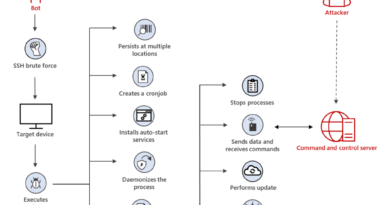Microsoft Security: 6 tips for enabling people-centric cybersecurity with security training

Everyone knows about phishing scams, and most of us think we’re too smart to take the bait. Our confidence often reaches superhero levels when we’re logged onto a company network. As Chief Security Advisor for Microsoft, and previously at telco Swisscom, it’s my business to understand how well employees adapt security training into their daily routines. Years of experience have taught me there are commonalities in human behavior that cut across all levels of an organization. Above all, people want to trust the company they work for and the communications they receive. It’s our task to help them understand that yes, their employer is looking out for them, but they also need to be vigilant to protect themselves and their company’s private data.
Tip #1: Make it fun. That means creating training modules that people will actually want to watch. Think of your favorite TV shows. There’s a reason you want to binge every episode. You care about the characters, or you’re at least interested in how their dilemmas work out. A good example is the Fox TV show 24; every episode was one hour in an unfolding storyline with high stakes. Your training program doesn’t need life-or-death consequences, but it should give people a reason to watch beyond just checking a box for compliance.
Tip #2: Make it easy. Your end-user is your customer; so, you need them to buy-in. When investigating new security solutions, I ask: “Could you explain how this works to my mother in thirty minutes or less?” If not, it’s probably not a user-friendly solution. Asking people to create a password with 20 characters consisting of random symbols, cases, and numbers (that they shouldn’t write down) is not easy. For a better option, try passwordless authentication options for Azure Active Directory. If your organization has Microsoft Defender for Office 365 Plan 2, which includes Threat Investigation and Response capabilities, you can employ Attack Simulator in the Security & Compliance Center to run realistic scenarios. These simulated attacks can help you easily identify vulnerable users before a real attacker comes knocking.
Tip #3: Focus on your highest risk. Nearly one in three security breaches starts with a phishing attack costing the affected organization an average of USD1.4 million. Even after security training, employees still click on phishing links at an average rate of 20 – 30 percent. With the rise in people working from home, new forms, such as consent phishing, have cropped up to take advantage of new vulnerabilities. Direct your resources to where the people in your organization can see the risk is real, and you’ll generate positive engagement.
Tip #4: Be transparent about breaches. No organization can claim 100 percent invulnerability. Let people know they are the first line of defense. Communicating with staff when a successful attack occurs will help them remain alert. It’s okay to provide examples as long as you don’t reveal so much information that it’s obvious who clicked on that fake Zoom invitation. Be careful not to treat employees like children. They need to own their own actions, but shaming won’t make your organization safer.
Tip #5: Avoid a compliance only mindset. Yes, that once-a-year cybersecurity training your people dutifully click through meets the organizational requirement. But gaining employee buy-in means doing more than just checking the box. Schedule a refresher course after a breach, even if the victim happens to be another company. Creating a security program that’s fun and engaging will probably cost more, but ask yourself how high the costs from downtime and lost productivity from a major breach would run. Better to invest those funds in protection upfront.
Tip #6: Communicate and educate continuously. Make security news part of your normal staff communications. Talk to your people about the headline-making hacks that target large corporations and government agencies, as well as the smaller identity theft and payment-app scams we all contend with. Talk about supply chain security and the dangers of using unauthorized devices and shadow IT. Cybersecurity threats can feel overwhelming and scary. Communication helps demystify those threats and makes employees feel empowered to protect themselves and their organizations.
To learn more about Microsoft Security solutions visit our website. Bookmark the Security blog to keep up with our expert coverage on security matters. Also, follow us at @MSFTSecurity for the latest news and updates on cybersecurity.
READ MORE HERE



